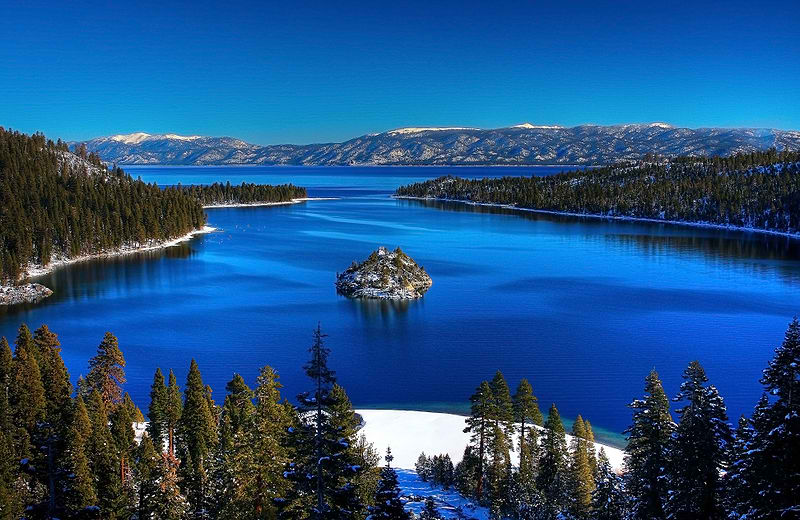In teaching Tahoe-Sierra Preservation Council v. Tahoe Regional Planning Agency, something struck me about the fact that the case was appealed from a (bizarre) 9th Circuit opinion. Why was this case in federal court? Usually, inverse condemnation suits–which is what this suit was– must be brought in state court under Williamson County Regional Planning Commission v. Hamilton Bank of Johnson City. The Tahoe-Sierra opinion doesn’t mention Williamson, or even acknowledge why it is in federal court.
I asked Tim Sandefur, because Pacific Legal Foundation was involved in a lot of this litigation. Tim’s colleague Jim Burling, who was around with this litigation, pointed me to this colloquy in Suitum v. Tahoe Regional Planning Agency, which was argued in 1997 (5 years before the big Tahoe-Sierra). The case isn’t directly no point, but it was pretty close.
Right off the bat, Kennedy and Scalia nail Pacific Legal Foundation attorney R.S. Radford about why they are in federal court, and whether Williamson applies:
Chief Justice Rehnquist: We’ll hear argument now in Number 96-243, Bernadine Suitum v. Tahoe Regional Planning Agency.
Mr. Radford.
Mr. Radford: Mr. Chief Justice, and may it please the Court:
This case is about an ordinary property owner who’s been denied all beneficial use of her land and then, in addition, has been denied access to the courts to seek relief for that categorical taking of her property.
[Justice Kennedy]: Well, at the outset, I… and maybe you can answer this question very easily.
I don’t know why you didn’t bring an inverse suit here, number 1, as a matter of choice.
I don’t know why you’re not required to do so under Williamson as a matter of law, unless it’s peculiar to TRPA.
There’s no inverse action available to you against the bi-State agency?
Mr. Radford: Well, the Tahoe Regional Planning Agency, of course, is a bi-State body operating under an act of Congress, and the type of proceeding that was initiated here in district court would appear to be specifically authorized under the TRPA compact.
[Justice Kennedy]: Can you bring an inverse suit against the Tahoe Regional Planning Agency?
Mr. Radford: Well, I’m afraid that I can’t answer that question, Justice Kennedy.
[Justice Kennedy]: But don’t you have to answer it under Williamson?
Williamson says that that’s what you must do.
Maybe… is it because the agency has no treasury, I guess, to pay the judgment, or–
Mr. Radford: Does your… is the thrust of your question going to the second prong of Williamson County regarding the need to pursue State remedies?
[Justice Kennedy]: –Yes, and these aren’t State remedies because it’s a bi-State agency, but it still seems to me that to put the case into focus you should go to inverse condemnation first and then 1983 if there’s no inverse available.
Mr. Radford: Well, the position of the Tahoe Regional Planning Agency is that they do not have the power of eminent domain, they do not have provisions for paying just compensation, and this entered into the decision that was made at the initial level of this litigation to proceed by way of Federal–
[Justice Kennedy]: : Thank you.
And so we might say that generally we do not know that there are routinely inverse suits filed against the agency and defendant against the agency as they would be against, say, the State of California or the State of Nevada?
Mr. Radford: –I’m not aware of such a practice, certainly not routinely, Justice Kennedy.
Unknown Speaker: Thank you.
[Justice Scalia]: Does the charter of the agency give them eminent domain power?
Mr. Radford: No, it does not, Justice Scalia.
So what’s the answer? It has something to do with the nature of the Tahoe Regional Planning Authority, and the fact that they lack a treasury, lack the power of eminent domain, and thus no inverse condemnation suit would lie under state law. Thus Williamson is inapposite. Neither SCOTUS opinion addressed this point, so this is the best we got.
And here are some pictures of Lake Tahoe.
Lake Tahoe is a large freshwater lake on the border of Nevada and California.
